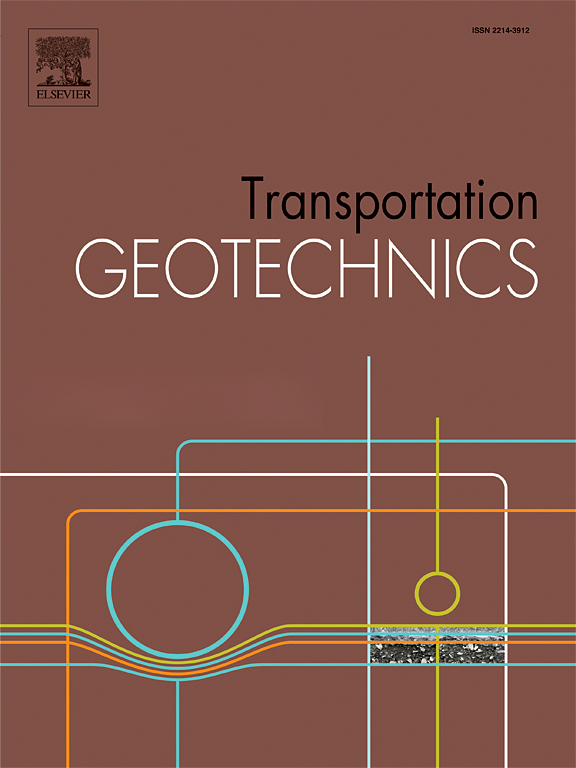Experimental study on the effect of unloading rate on monotonic and cyclic behavior of fissured clay
IF 4.9
2区 工程技术
Q1 ENGINEERING, CIVIL
引用次数: 0
Abstract
Variations in excavation construction periods for fissured soil transportation engineering lead to differing unloading rates, which affect the soil’s mechanical properties. This study utilizes a triaxial testing system to conduct monotonic and cyclic loading undrained shear tests on undisturbed fissured samples as well as remolded samples subjected to three distinct unloading rates. The K0 consolidated samples are regarded as soil mass that undergoes no unloading during testing. The findings indicated that the initial unloading rate influences the reloading shear mechanical properties of undisturbed and remolded specimens. The effects of unloading rates differ between undisturbed and remolded soil, a discrepancy attributed to inherent fissures. Specifically, undisturbed soil exhibits significant damage at low unloading rates due to fissures, while remolded soil experiences strength augmentation due to compaction with decreased unloading rates. Similarly, unloading will cause a loss of strength. Structural disparities result in the monotonic loading strength of undisturbed specimens being higher than that of remolded ones. In contrast, remolded specimens demonstrate greater dynamic strength under cyclic loading, likely because fissures deform, diminishing overall dynamic strength. Subsequent microscopic analysis, utilizing SEM images, along with a discussion of macroscopic inherent fissures, elucidated the impact of unloading rate on soil damage mechanisms, advancing the understanding of fissured soil behavior post-unloading. The study of mechanical properties of fissured soil following varying unloading rates is crucial for comprehending its damage mechanism and determining post-unloading soil strength parameters, providing valuable insights for practical applications in soil engineering.
求助全文
约1分钟内获得全文
求助全文
来源期刊

Transportation Geotechnics
Social Sciences-Transportation
CiteScore
8.10
自引率
11.30%
发文量
194
审稿时长
51 days
期刊介绍:
Transportation Geotechnics is a journal dedicated to publishing high-quality, theoretical, and applied papers that cover all facets of geotechnics for transportation infrastructure such as roads, highways, railways, underground railways, airfields, and waterways. The journal places a special emphasis on case studies that present original work relevant to the sustainable construction of transportation infrastructure. The scope of topics it addresses includes the geotechnical properties of geomaterials for sustainable and rational design and construction, the behavior of compacted and stabilized geomaterials, the use of geosynthetics and reinforcement in constructed layers and interlayers, ground improvement and slope stability for transportation infrastructures, compaction technology and management, maintenance technology, the impact of climate, embankments for highways and high-speed trains, transition zones, dredging, underwater geotechnics for infrastructure purposes, and the modeling of multi-layered structures and supporting ground under dynamic and repeated loads.
 求助内容:
求助内容: 应助结果提醒方式:
应助结果提醒方式:


